UNDERGROUND ACOUSTICS
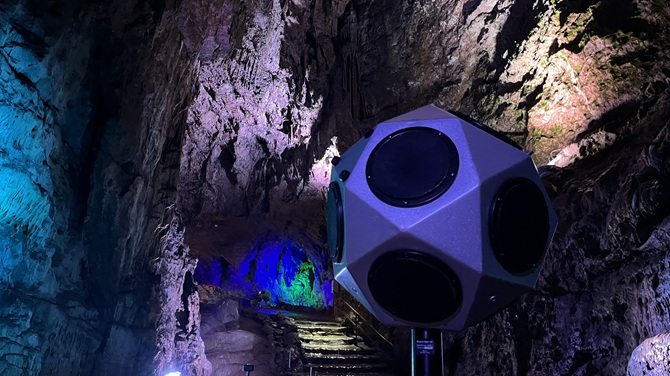
We have recently been fortunate enough to be granted access to some amazing and unique spaces. These have included the Wookey Hole Caves, the Clifton Suspension Bridge Vaults, and the Brabazon Hangars. The owners/custodians allowed us to access with various items from our range of specialist testing equipment and to spend some time categorising what makes the spaces so special.
Our normal approach inside a building, where there is electrical power and easy access is to operate a loud speaker, filling the room up with sound. When a steady level is reached we switch it off and measure how the sound level decays away. The decay tells us about how energy is being dissipated within the space, which is normally mostly due to reflections from the walls, ceiling and floor. However when we have to traverse ladders, work in environments which are wet or don't have electrical power, we use a starter pistol to generate a single loud "bang" and we measure the decay to extract the same information about the space. Where a starter pistol isn't appropriate we sometimes use balloons.
Wookey Hole Caves, Wells, Somerset
The Wookey Hole cave system is formed in sedimentary rock underneath the Mendip Hills in Somerset. It has taken millions of years for water to seep through the ground and erode the huge caverns which are now accessible to the public. These caverns were also the first place that somebody was brave enough to put caving and diving together and it was here in 1935 that cave-diving was born!
For a company team building exercise we visited the caves to take part in the "Wild Wookey" experience (a pic of Gav on the experience is below) where you get to visit parts of the caves not normally seen by the public and get to squeeze through small gaps and abseil through caverns. It is a fantastic experience and one we thoroughly recommend. However it was during this visit that our guide mentioned the acoustics of the caves, and unfortunately she wasn't aware of her audience and we proceeded to ask some awkward questions.
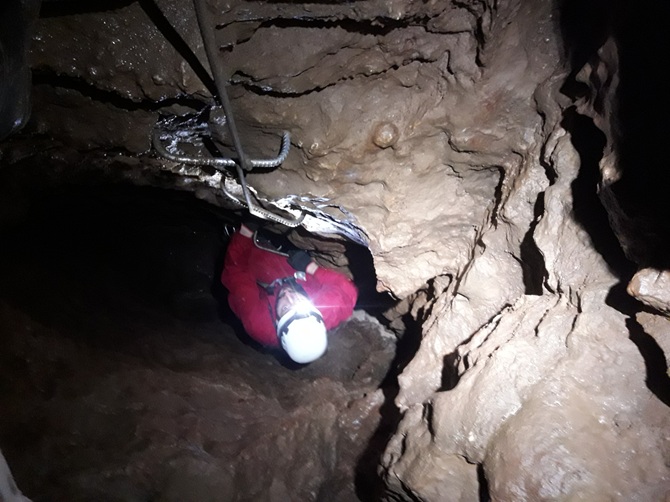
The great thing about the first trip was that we were able to agree with Wookey Hole Caves for a second visit, to take place out of hours where we would get the caves to ourselves to measure the acoustics using our full array of testing equipment.
On this visit we measured how the sound decays in each chamber. We were not concerned about the starter pistol causing damage to the rocks or stalactites, but we were careful not to test where we might disturb the bats. In chamber 3 we also measured how well speech can be heard, and more importantly how well it can be understood across the space. To do this we generate a particular signal to mimic speech and to define how the cavern affects it from one position to another. We call this the Speech Transmission index (STI for short) and this is more commonly measured in a lecture theatre, concert venue or train station. A value of 1 indicates perfectly clear transmission, and a value of 0 indicates no transmission although these extremes are both unlikely.
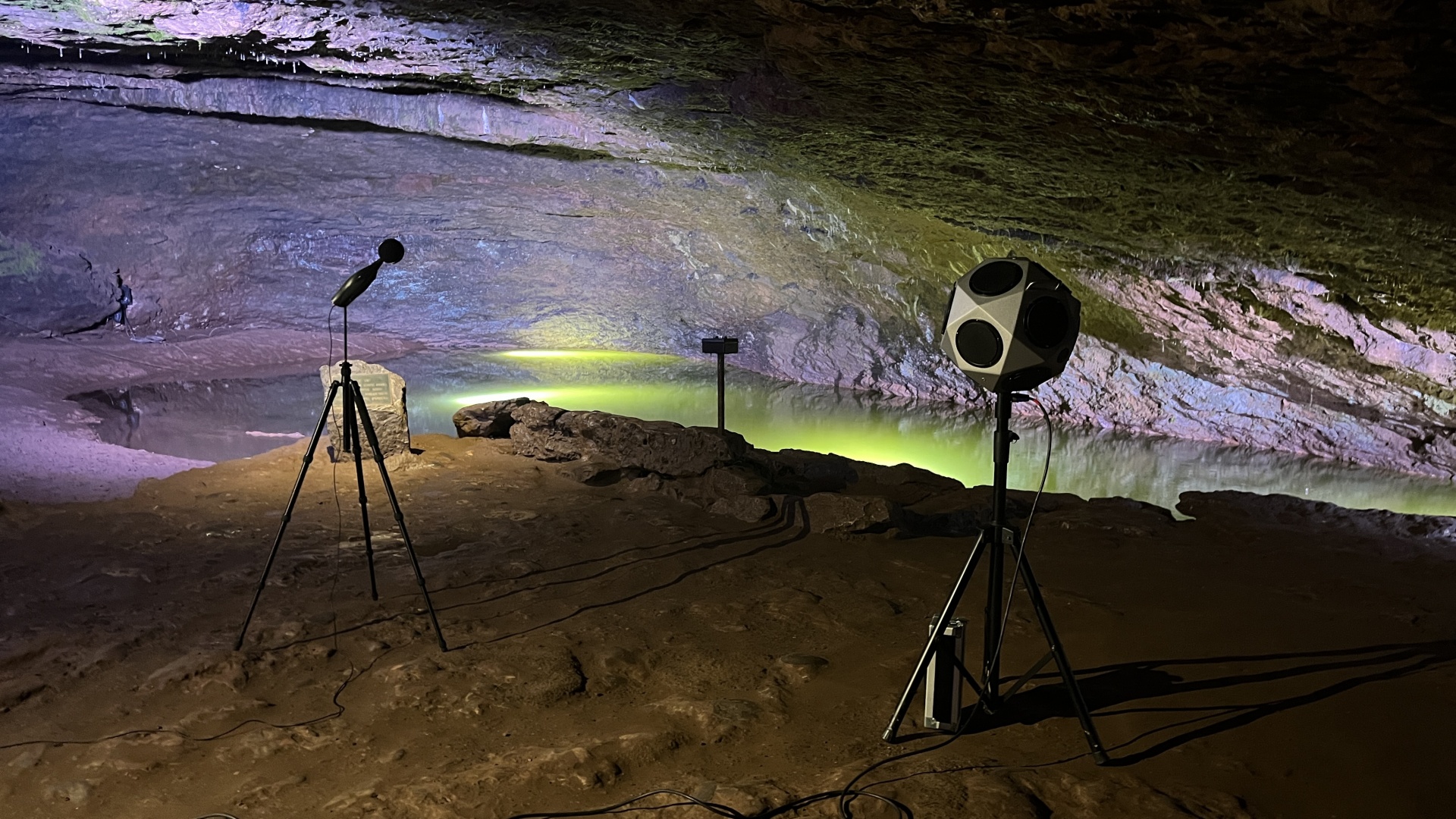
The results were fascinating!
We are checking whether there is a World Record category for the "Longest reverberation time in a natural structure". In cavern 3 our measurements show the reverberation time with a value of 14 seconds in the 25 Hz 1/3 octave band! The STI values showed just how difficult it is to communicate across a cavern with the index dropping to 0.4 (where speech is very difficult allowing only the transfer of very simple or familiar messages) at a distance of 10 m.
Clifton Suspension Bridge Vaults, Bristol
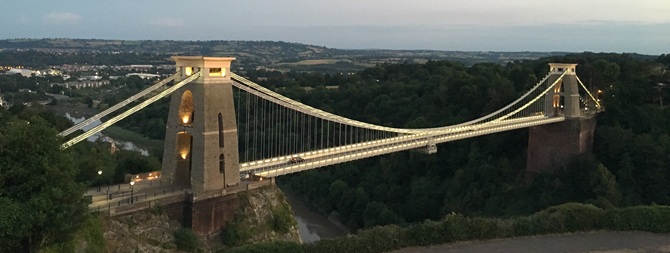
The bridge is a Bristol icon, spanning across the Avon gorge, but did you know that the beneath the tower on the Leigh Woods side the foundations are formed of 12 vaulted chambers linked by shafts and tunnels. More amazing (we think) is that the whole underground structure remained unknown and undiscovered until 2002 where it was found by accident during some maintenance work. These chambers have been effectively sealed since the bridge was completed in the 1860s and not even spiders have taken up residence.
The vaults are stunning. We were fortunate enough to visit with the Institute of Acoustics (a group of like minded acoustic nerds) on the "hard hat tour" taking us into the vaults. The vaults are decorated with long stalactites (also known as dripstone formations, or calthemites where they are formed inside a man-made structure!). Some are as long as 5 m, and they are very thin and delicate.
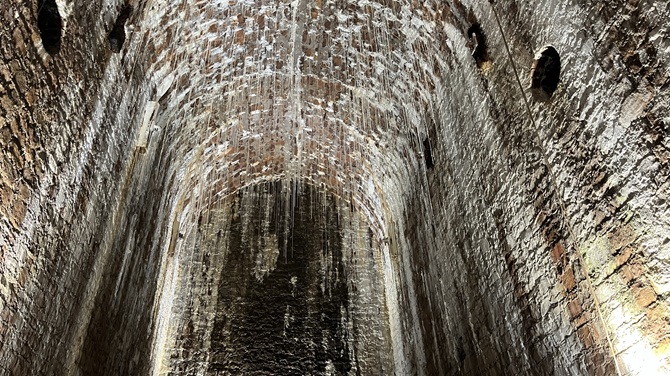
The normal approach we use to measure the decay of sound is to make a loud "bang" with a starter pistol, but on this occasion we decided the high pressure waves sent out by the pistol may damage the delicate formations. So we used the lower power alterative of popping a balloon.
The result is a reverberation time of 2.9 seconds (averaged across the octave bands 63 to 8k Hz). The headline is that the result shows a much longer reverberation time at the lowest frequencies, with some 1/3 octave bands extending up to c. 11 seconds!
Brabazon Hangars, Filton, Bristol
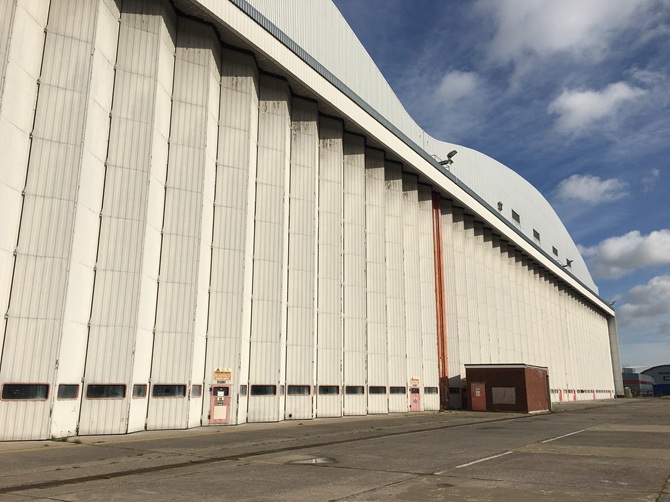
Our director Ian used to work at Airbus, based on the airfield at Filton in Bristol. The site is well known locally for it's huge contribution to the aerospace industry, and more recently for the potential for the Brabazon hangars to be converted into an arena. The hangars are listed structures, and special because they were the birthplace of the post-war luxury commercial aircraft The Brabazon, and all 10 British Concordes were assembled here.
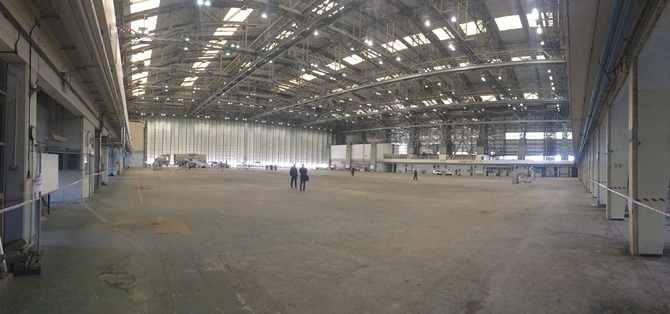
We visited the hangars on a public tour put on by the owners and came "armed" with a sound level meter and a pocket full of balloons. The reverberation time in here was measured in non-ideal conditions as there was quite a lot of background sound from equipment that was still operating, and there were also a bus full of people also on the tour. Despite the limitations we managed to measure the reverberation of the hangars in some frequency bands lasting as long as 25 seconds!
We are always on the look out to test more interesting spaces. Please get in touch if you know of anywhere we could visit.